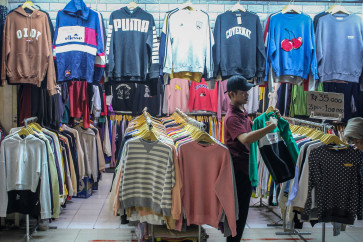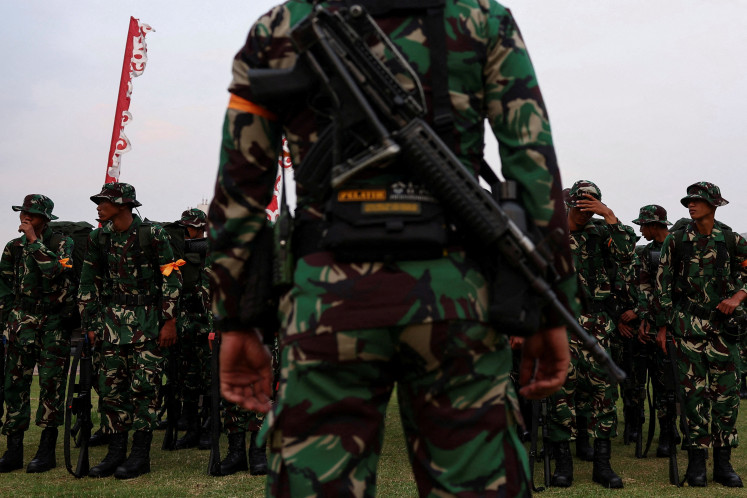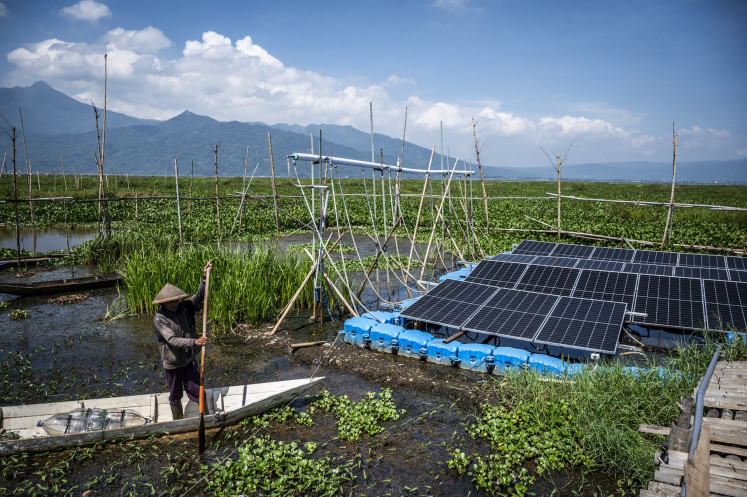Popular Reads
Top Results
Can't find what you're looking for?
View all search resultsPopular Reads
Top Results
Can't find what you're looking for?
View all search resultsIndonesia Fashion Week: Celebrates Cultural Identity
Musa Widyatmodjo - Chossy Latu by Iwan Tirta - Anne Avantie (JP/Steven)Indonesia Fashion Week is an extravaganza, showcasing imaginative collections that bring together cultures from across the archipelago
Change text size
Gift Premium Articles
to Anyone
Musa Widyatmodjo - Chossy Latu by Iwan Tirta - Anne Avantie (JP/Steven)
Indonesia Fashion Week is an extravaganza, showcasing imaginative collections that bring together cultures from across the archipelago.
The five-day Indonesia Fashion Week (IFW) — the flagship event of the Indonesian Fashion Designers and Fashion Entrepreneurs Association (APPMI) — aims to support the local fashion industry and push it to be a leader in the region. Now in its seventh year, the event runs until Sunday.
Given its size, with an astounding lineup of 200 designers, both local and international, 460 exhibitors, numerous shows, workshops and seminars, it appears to have been a challenge to organize the event.
There were baffling aspects, nevertheless. For thematic fashion shows in the first two days, guests were made to sit for over an hour straight to see nine consecutive, full-extent collections, nonstop. On other days, up to 12 collections were showcased.
That’s at least 135 designs on one go, roughly, assuming each designer presents 15 looks. It’s hard for anyone — be it VIPs or the general public — to fully digest, which doesn’t do justice for the designers.
At fashion week, fashion shows were like concerts, complete with an enormous stage, live performances, celebrities and theatrical lighting.
The seating at the Jakarta Convention Center’s Plenary Hall is podium style, like what you see at a badminton match. So it was hard to see the clothes and their details, which fashion events like this should still emphasize, considering there’s little opportunity to see the clothes afterward.
This year’s theme was “Cultural Identity”, which is similar to last year’s “Celebrations of Culture”. Given that, one would expect the designers to offer clear translations of such places through concise, relevant collections. It should demonstrate a visual makeup of what makes Indonesia what it is.
The thematic shows were inspired by Indonesia’s well-known tourist destinations, namely Lake Toba in North Sumatra, Borobudur temple in Central Java and Labuan Bajo in East Nusa Tenggara.
For the “Great Toba” themed show, designers Merdi Sihombing, Ida Royani, Corrie Kastubi, Defrico Audy, Ivan Gunawan, Ariy Arka, Torang Sitorus, Ghea Panggabean and Sikie Purnomo presented their collections.
Anne Avantie: (JP/Steven)
There were obviously a lot of ulos woven fabrics of North Sumatra, both authentic and printed. Everyone was clear on the translations of theme, but they weren’t very consistent in practice. Few were entirely convincing.
Renowned designer Ida Royani, however, showed fantastic, elegant and practical modest womenswear without cutting the original fabric; while Defrico Audy showed us couture of quality and graphic textiles.
Others had too many ideas. Torang Sitorus offered ruffled and feathered collars that constricted the model’s neck, and a soundtrack that did not fit the mood of the collection; Ariy Arka had deconstruction and prints that didn’t gel together; Sikie Purnomo’s presentation, titled “The Kingdom of Toba”, had really casual-looking menswear but over-the-top womenswear.
The looks all feed the stigma that ethnic fashion can’t be effortless, and in Sikie’s case, that women’s clothing is far more complicated than men’s. It’s 2018.
In Ivan Gunawan’s collection, though very concise and edgy, tailoring was an issue — sleeves were too big, collars were sloppily stitched and dresses were not cinched properly.
Clothes from Ghea Panggabean used and draped too much fabric, making the outfits seemed heavy and bulky; while Ariy Arka’s coats were too big and shirts were awkwardly cropped.
Then there were other details, like styling most of the clothes. Sky-high stilettos that were last seen in 2005 were used plenty; finale dresses were not steamed properly; over-accessorizing was rife; and traditional skirts were tied too tight that the models could not walk properly.
If the flaws were visible 10 meters away, it’s definitely a problem.
On the bright side, the event also featured designers who are regulars and household names, such as Chossy Latu, Sugeng Waskito, Anne Avantie, Vicky Soetono and Agnes Budhisurya, who had their shows on day two and day three. They certainly know better.
But given the first day’s show, it’s hard to measure how much of a progress the industry has made. With the event is in its seventh year, it’s hard to accept this baffling condition, even if the fashions offered are inventive. Indonesia cannot gain a competitive edge from price, culture and ideas alone — if it wants to be taken seriously as a fashion capital. Finesse, execution and quality are also key.











